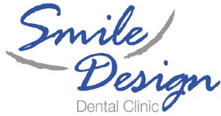Orthodontic is a treatment to prevent or correct misaligned teeth and jaws, which are called malocclusions or faulty occlusions. A person may seek orthodontic treatment for cosmetic reasons as well as health reasons. Beside the insecurity and low self-esteem that dental irregularities may cause, they can also affect a person’s ability to chew and speak. Severely misaligned teeth and jaws can cause snoring, sleep apnea and other breathing Problems.
Many adults and teens are eager to achieve beautiful smiles without wearing braces. Invisalign is an express aligner system that corrects the minor imperfections you dislike in only 6 months it is a very comfortable way to straighten your teeth without wires and being virtually invisible, allows you to work, exercise and socialize as normal. Once we determine that you are a candidate, we will have impressions that will be used to develop a set of aligners precisely for your smile. You will be able to begin aligner treatment just 3-4 weeks later.
Braces traditionally mean two things to people (a) metal mouth and (b) long treatment. Six month smiles is a remarkable treatment with the main goals of straightening teeth, closing spaces and improving the overall symmetry of the smile. These goals are very similar to veneers, but of course avoid the necessity of drilling and tooth damage. This is mainly a cosmetic treatment, and in the case of more severe orthodontic problems, traditional braces are still the first option.
Children are a special case because they are growing. As every mother knows, their children grow faster at some ages than at others. So dentists like to time their treatment for the ages when the child is mature enough to co-operate with treatment, and also when the bone is growing most rapidly. The optimum age for beginning treatment depends upon the specific problem but the best age for evaluation is usually aged 7 years. When problems are assessed early and treated prior to the time that they have fully developed we have intercepted the problem and this is referred to as interceptive orthodontics. Early treatment results in faster and better results.
What are the early signs of orthodontic problems?
Parents should look out for:
- Losing baby teeth early due to decay
- Top and bottom teeth that do not meet properly
- Crooked teeth
- Jaws and teeth that look out of proportion to the rest of the face
Clear Braces:
Instead of the traditional metal brackets and coloured bands, clear brackets and bands are available to make the device less visible.
Fixed Appliance:
A bracket is fitted to each tooth. A wire is then connected to each bracket. Coloured bands secure the wire to the brackets. Many different band colours are available. Slowly, over several months, the wire is shortened pulling the teeth gently into line.
Clear positioners offer a less visible alternative for correcting crooked teeth.
Firstly, a rough impression is taken …… then a second impression is taken with a fine material. This gives a very accurate final impression. A study model is made from the impression. A number of other models are made which represent the teeth moving into position.
From these a set of positioners are produced, each one designed to move the teeth by a tiny amount. The aligners are used in sequence and the teeth are gently moved into position.
The bands on conventional brackets apply friction to the wire which can slow down the movement of the teeth. Damon brackets clip the wire into position allowing it to move freely and therefore work more quickly.
